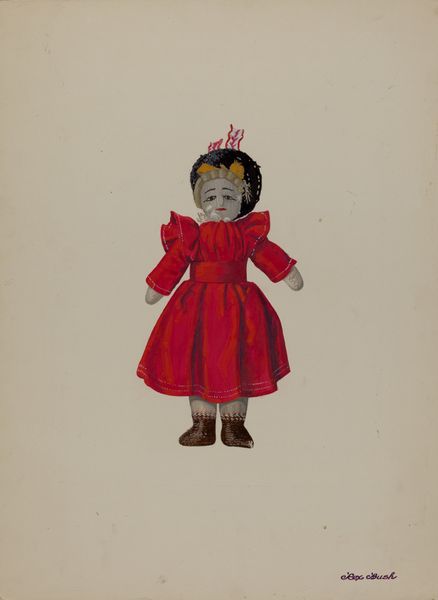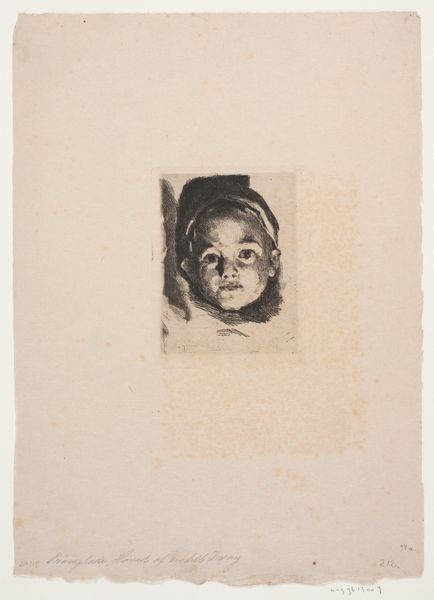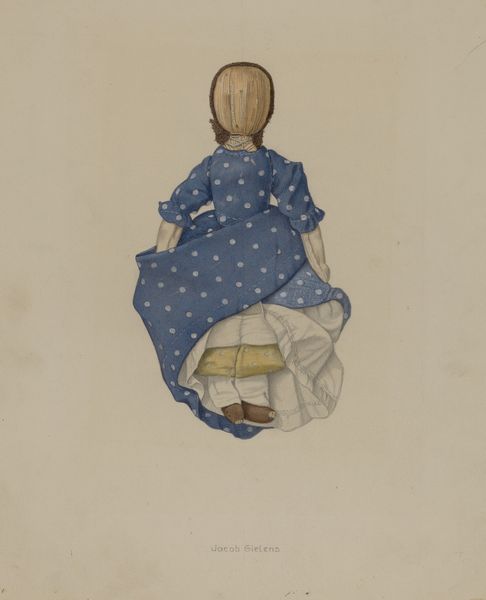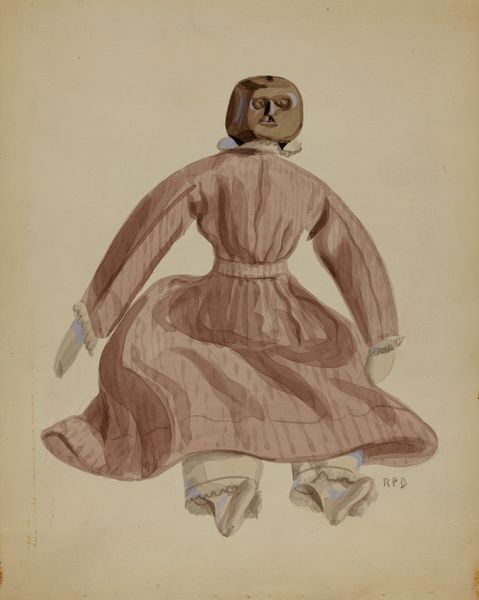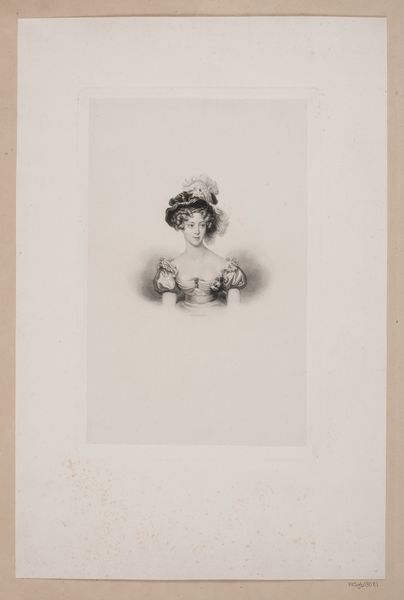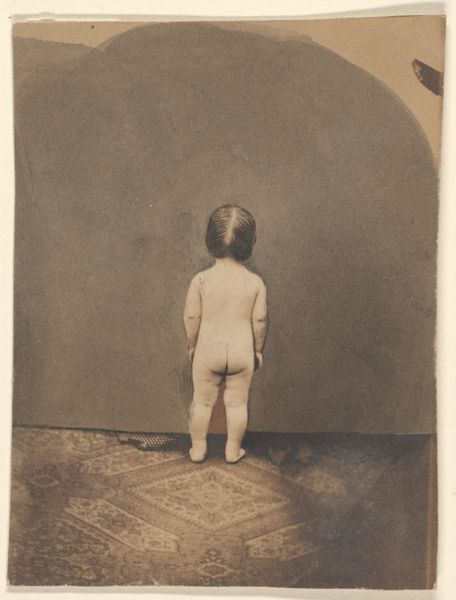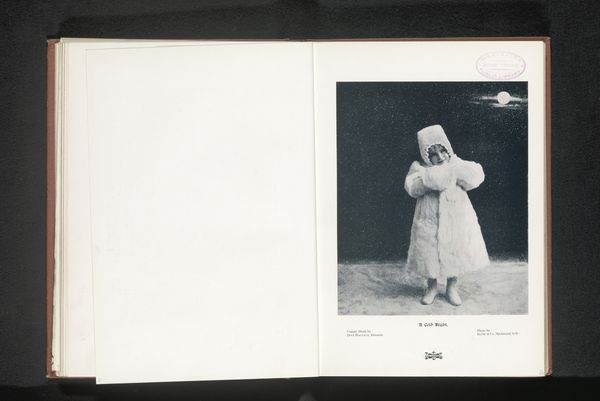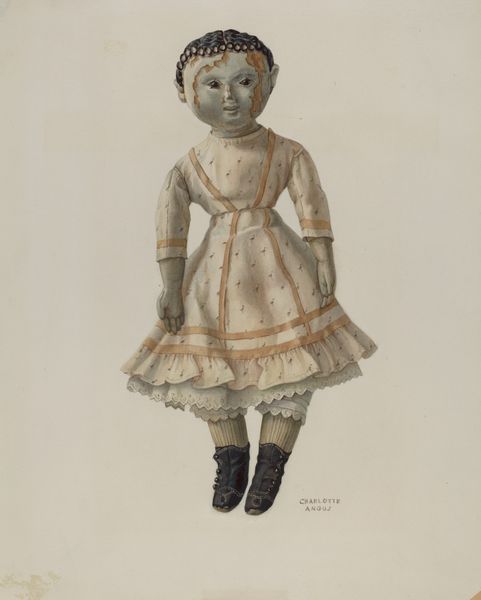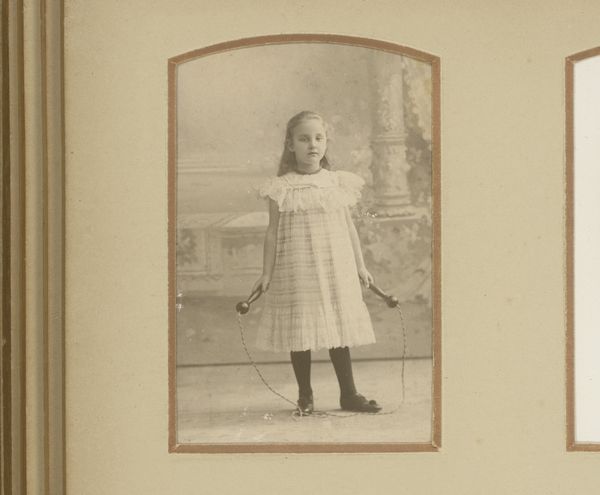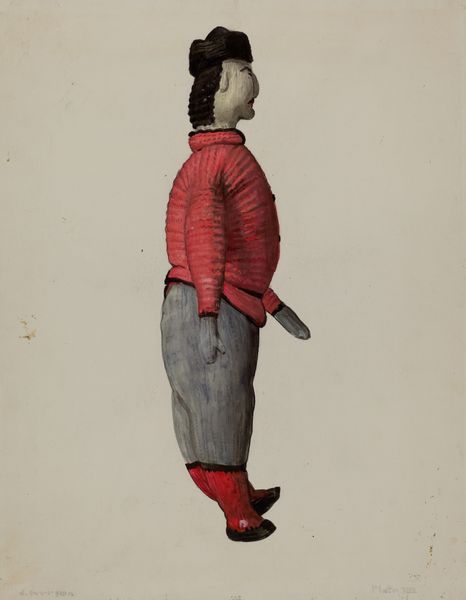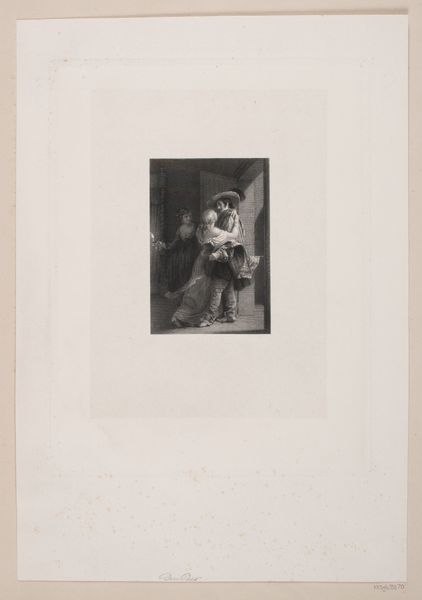
drawing, watercolor
#
drawing
#
figuration
#
watercolor
#
watercolour illustration
#
watercolor
#
realism
Dimensions: overall: 34.9 x 28.3 cm (13 3/4 x 11 1/8 in.) Original IAD Object: 5 1/2" high
Copyright: National Gallery of Art: CC0 1.0
Editor: So this is Henry Murphy’s "China Headed Negro Doll," a watercolor drawing made sometime between 1935 and 1942. There’s something unsettling about how starkly this doll is presented; it’s almost confrontational. What can you tell us about this piece? Curator: Well, consider the historical context. This was created during the Depression and leading up to World War II. These types of dolls, while seemingly innocent, were often fraught with racist caricatures and served as commonplace objects perpetuating damaging stereotypes. Think about the role these objects played in shaping racial perceptions during that period. Does the title itself strike you as odd? Editor: Definitely, it feels antiquated and maybe even offensive by today’s standards. So you are suggesting this artwork prompts reflection on the historical context of racial representation in everyday objects? Curator: Precisely. Murphy is choosing to depict an object laden with social meaning. And by rendering it in watercolor, almost clinically, the focus is drawn to its symbolic weight, its role as a cultural artifact that carries a complex history. What do you think that the artist achieves with this specific style? Editor: I hadn’t considered it that way. The "realism" is indeed confronting the viewer directly with this object and its troubling associations. It forces us to reckon with the problematic legacy of such items. Curator: Absolutely. The painting thus becomes more than just a depiction of a doll, but a commentary on the politics of imagery. Do you feel any personal emotion for this subject? Editor: Initially, I felt pity. But understanding the context, the layers of history surrounding this image, I think that maybe what the author wants is to provoke thought on how these apparently simple objects impact social dynamics. Curator: Yes, that critical approach may reveal the dynamics of visual and material culture from this particular time. I wonder what contemporary artists working with similar themes might say. Editor: Thanks, seeing it within its socio-political context makes it more powerful, though definitely much more complicated.
Comments
No comments
Be the first to comment and join the conversation on the ultimate creative platform.
